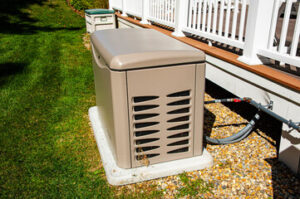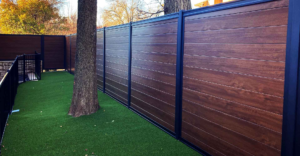Water damage often begins without warning. A small leak or unnoticed moisture can trigger major issues. Homes and buildings are especially vulnerable to hidden water threats. Even tiny amounts can create lasting harm. Contact Water Damage Restoration Utah for professional help.

Many underestimate the speed at which damage spreads. Within hours, porous surfaces absorb moisture. Wood begins to warp and paint starts peeling. Over time, structural integrity can weaken entirely.
Humidity and condensation are frequent culprits. Appliances and HVAC systems often cause subtle leaks. Damp basements or unsealed windows also invite problems. Moisture always finds its way through cracks and corners.
Mold growth is one of the earliest indicators. Within 24 to 48 hours, spores begin to multiply. This affects indoor air quality and human health. Those with allergies or asthma are most at risk.
Ceilings, walls, and flooring absorb water quickly. Materials like drywall and insulation retain moisture. These surfaces then become breeding grounds for decay. Affected areas can remain wet for weeks.
Water can also damage wiring and electronics. Electrical shorts can lead to fire risks. Outlets and sockets near the floor are especially threatened. Restoration must include thorough electrical inspection.
Carpets often hold water longer than expected. Beneath them, padding becomes a sponge. Mold and mildew thrive in these dark environments. A lingering odor can signal deeper trouble.
Hidden water may affect a building’s foundation. When soil shifts due to saturation, cracks appear. These fissures allow even more water inside. Structural instability becomes a growing concern.
Furniture and personal items can be ruined permanently. Upholstery holds moisture deep in its core. Paper goods like books or photos are highly vulnerable. Restoring sentimental items is often impossible.
Insurance does not always cover these situations. Policies vary in what they include or exclude. Many deny coverage for slow, unnoticed leaks. This leaves property owners unprepared and unsupported.
Newer buildings face challenges from poor construction. Improper sealing and rushed plumbing cause leaks. Aging infrastructure also presents vulnerabilities. Maintenance often gets delayed or overlooked.
Climate changes contribute to the frequency of water events. Intense storms and irregular rainfall patterns cause flooding. Even dry regions are now facing sudden water surges. Adapting buildings for this is essential.
Technology now plays a role in early detection. Smart sensors monitor moisture levels in real time. Some systems alert owners before major damage occurs. These tools help reduce long-term costs.
However, tech cannot replace human diligence. Regular inspections remain the first defense. Spotting leaks early can prevent greater losses. Listening for dripping or checking for stains is vital.
Restoration must address more than visible issues. Drying surfaces is not enough to prevent rot. Professionals use industrial fans and dehumidifiers. These tools accelerate recovery and remove lingering dampness.
Testing the air for mold spores ensures safety. Removing damaged materials prevents contamination. Reconstruction may involve rebuilding entire sections. It is not just repair but reinvention.
Time is the most important factor in recovery. The sooner action is taken, the less severe the impact. Waiting invites irreversible damage to grow. Quick decisions reduce long-term expenses.
Many restoration experts follow strict procedures. They map out damage zones and moisture levels. This ensures every area is treated properly. Skipping steps can leave hidden damage behind.
Sometimes, water damage reveals other hazards. Asbestos or lead paint might be disturbed. Handling these requires special containment measures. Safety must come before speed during cleanup.
Landlords and business owners face unique challenges. Multiple tenants may be affected at once. Coordinating repairs becomes a logistical effort. Communication plays a key role in resolution.
Schools and public spaces are also vulnerable. Large foot traffic increases the risk of unnoticed leaks. Maintenance teams must remain alert and responsive. Preventive systems should be part of every plan.
Legal concerns arise when damage is widespread. Tenants may pursue claims if water isn’t addressed. Documentation of response time becomes crucial. Records protect both sides during disputes.
Landscaping can contribute to indoor water problems. Improper drainage or sloping directs water inside. Foundation coatings and gutters help manage flow. Outdoor changes must reflect water awareness.
Building materials matter more than ever. Water-resistant drywall and closed-cell insulation offer protection. Flooring options now include waterproof designs. Choices today influence outcomes tomorrow.
Sustainable design includes water mitigation systems. These features handle overflow and runoff safely. Green roofs and rain gardens assist in control. Eco-friendly choices reduce interior risk.
Education about water risks is still lacking. Homeowners often don’t know early warning signs. Workshops and online resources improve awareness. Knowledge reduces panic when leaks occur.
Emergency response teams are trained for these events. They use tools to measure hidden moisture. Infrared cameras detect what eyes cannot see. This speeds up the identification process.
Even after repairs, vigilance is needed. Humidity levels must stay controlled year-round. Regular checks on plumbing prevent recurrence. Maintenance schedules are essential for resilience.
Seasonal shifts affect water vulnerability. Melting snow and spring rains stress building defenses. Summer storms and high humidity follow soon after. Each season brings a different water threat.
Older homes need special attention. Their materials may not withstand repeated moisture. Basements are especially at risk for flooding. Retrofits help strengthen aging structures.
New homeowners should inspect before buying. Water stains and warped wood hint at deeper problems. Professional assessments reveal the truth. It’s better to uncover issues early.
Leaking roofs are among the top causes. Shingles degrade and seals wear over time. Without regular inspection, damage spreads quickly. Roof upkeep prevents future crises.
Sump pumps can provide some protection. When maintained properly, they manage overflow. However, they require electricity to operate. Backup systems ensure reliability during outages.
No two water events are the same. Some are minor and easily fixed. Others require full restoration services. Quick assessment determines the right approach.
Families should prepare a water emergency plan. Knowing what to shut off and who to call helps. Evacuation routes and key numbers should be ready. Planning brings peace during panic.
Pets are often forgotten during emergencies. Their bedding and food can get soaked. Clean water and shelter must be ensured. They rely on owners to protect them too.
Garages and storage spaces often hold damage. Cardboard boxes absorb water fast. Stacking items on pallets keeps them safe. Climate-controlled storage is best in vulnerable areas.
Each case teaches a lesson in preparedness. Responding fast and thoroughly saves money and stress. Long-term planning reduces future risks. Water damage is manageable with the right actions.
Recovery is not just about buildings. It affects emotions, routines, and finances. Returning to normal takes time and patience. Support systems help restore confidence and control.
Understanding water’s behavior is crucial. It flows, seeps, and lingers where least expected. What starts small can end big without warning. Awareness is the first step toward prevention.
Taking care of a property includes facing water threats. Neglect leads to worsening consequences. Active management keeps homes dry and safe. Every effort today protects tomorrow.



